Exhibitions Schedule 2021
*Exhibition lineup and period are subject to change under the Covid-19 circumstances.
*No advance reservation is required. However, we may ask guests to wait at the entrance depending on the crowd condition inside the museum.
Early Summer Exhibition 2021
Ryokan (Part 2):
Poet with the heart and spirit of the Japanese
- Period
- Saturday, April 24 –Sunday,
July 4August 1, 2021 - Closed
- Mondays and June 29
- Opening hours
- 10:00am to 4:30pm (last entry 4:00pm)
Ryokan (1758-1831) was a renowned poet and calligrapher of the late Edo period who lived as a mendicant priest. People called him “Ryokan san” with affectionate respect. Born the eldest son of the Tachibanaya family that served as village head of Izumozaki in the Echigo Province, Ryokan initially entered the family business, but became a Buddhist priest at the age of eighteen. After years of ascetic practice, he made a pilgrimage around the country subsequently returning to his home village and stayed in huts at Gogoan or Otoko Shrine on the hillside of Mount Kugami. Ryokan never ran a temple or desired fame but cherished all living beings and lived with the bare minimum. He spent his days playing with children, having conversations with friends, composing Japanese or Chinese poems, and creating calligraphic works.
Ryokan’s simple attitude to life and his calligraphic works are still highly esteemed by people of all walks of life. This second exhibition of Ryokan following the one held in the spring of 2018 introduces treasured calligraphic works from the collection of a major private collector of Ryokan works as well as the pieces recently added to the collection. We hope the visitors enjoy the charming works of Ryokan, a beloved poet with the heart and spirit of the Japanese.
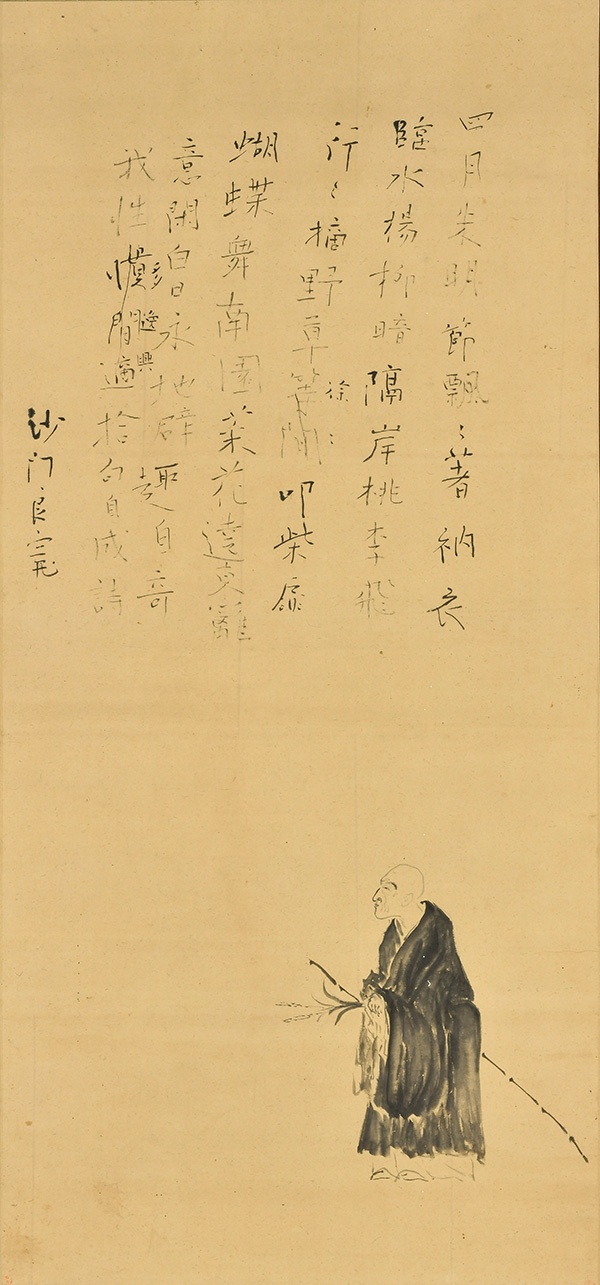
by Ryokan
19th century, Edo period
Private collection
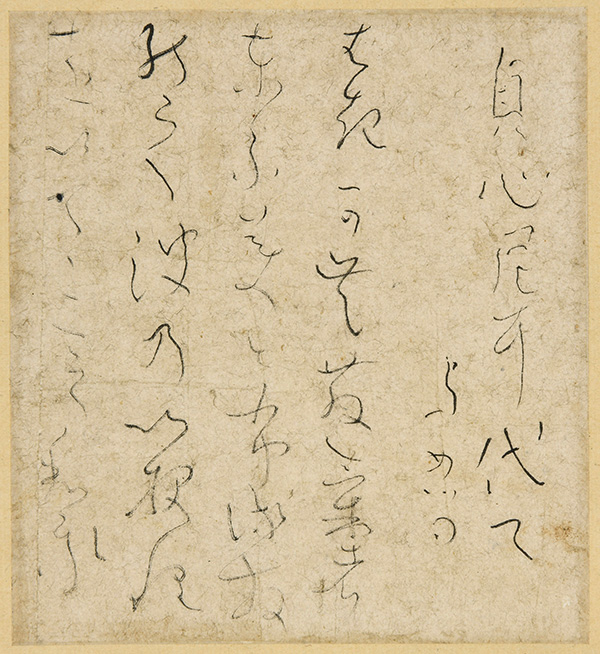
by Ryokan
1828 (Bunsei 11)
Private collection
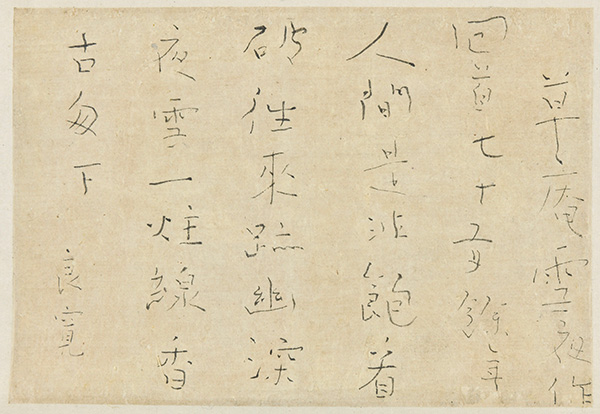
by Ryokan
1830 (Tempo 1)
Private collection
Summer Exhibition 2021
Beautiful Equipment of Warriors:
Arms and Armor of the Hosokawa Daimyo Family
- Period
Friday, July 23Tuesday, August 17 –Monday (National Holiday), September 20, 2021- Closed
- Mondays(Exceptions: open on September 20)
- Opening hours
- 10:00am to 4:30pm (last entry 4:00pm)
During the Warring State Period, warrior lords prepared a large number of arms and armor specially made for them. They were not only eminently functional but were also decorated with elaborate designs to boost the morale of the commander and his troops. Even in the peaceful days of Edo Period, successive lords of clans made decorative arms and armor as status symbols of the family. Thus many unique arms and armor reflecting the aesthetic tastes of the lords are found among the treasures in the daimyo family collections today.
Eisei Bunko Museum houses numerous arms and armor owned by the successive generations of the Hosokawa family. This exhibition introduces the equipment ordered by the highly cultivated Hosokawa lords, such as Gusoku armor, known as “Sansai style”, that was originally designed by the 2nd head Tadaoki (1563-1645), spectacular helmet worn by the 3rd head Tadatoshi, and Jinbaori (surcoat) which shows the European influence. We hope the visitors enjoy discovering the sophisticated culture of the warriors in the turbulent times.
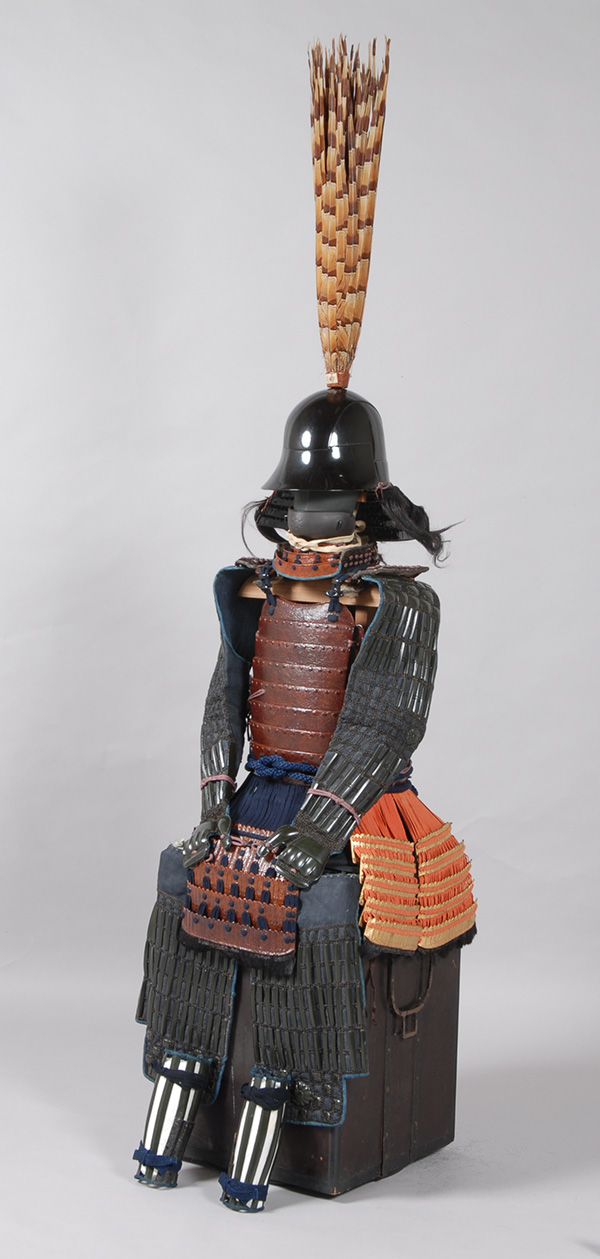
Worn by Hosokawa Naritatsu
19th century, Edo period
Eisei Bunko Museum (Entrusted to Kumamoto Prefectural Museum of Art)
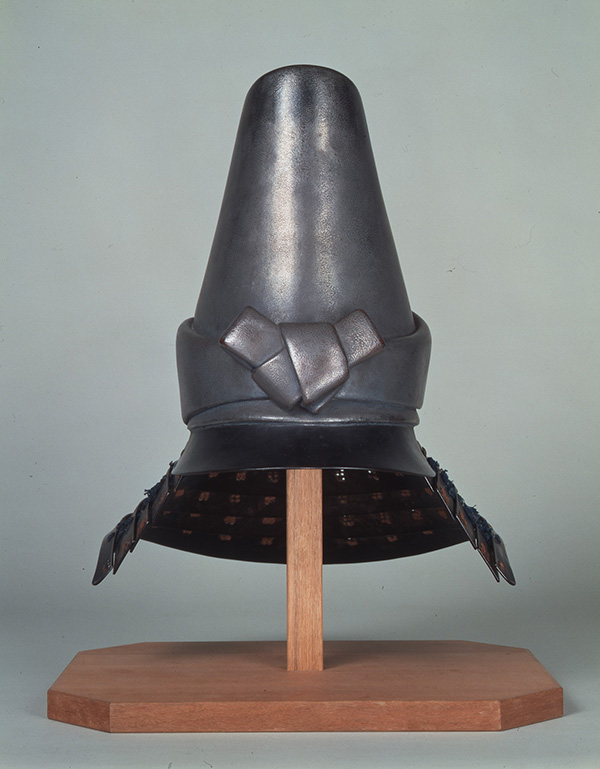
Worn by Hosokawa Tadatoshi
17th century, Edo period
Eisei Bunko Museum (Entrusted to Kumamoto Prefectural Museum of Art)
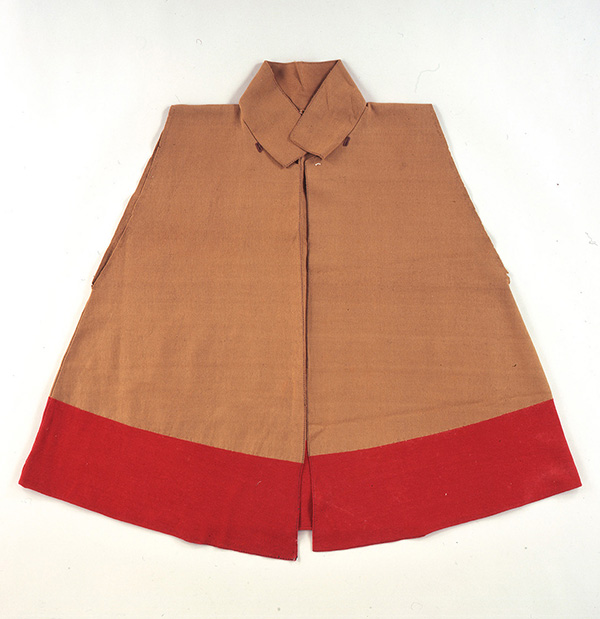
Worn by Hosokawa Tadatoshi
17th century, Edo period
Eisei Bunko Museum

18th century, Edo period
Eisei Bunko Museum
Autumn Exhibition 2021
Basho: “the Unchanging and the Ever-changing”
Celebrated Works from Kakimori Bunko Collection
- Period
- Saturday, October 2 –Sunday, December 5, 2021
- Closed
- Mondays and November 2
- Opening hours
- 10:00am to 4:30pm (last entry 4:00pm)
Kakimori Bunko (Itami City, Hyogo Prefecture) was founded in 1982 with a view to store and preserve the collection of haiku poetry amassed by Okada Rihei (1892-1982), the 22nd head of the Okada family. The Okadas have been engaged in sake brewery for generations, and the successive heads of the family used pseudonyms containing the character “柿kaki (persimmon)” after the great old persimmon tree in their garden.
"Kakimori" is the pseudonym of Rihei, which means “the guardian of persimmon tree” in Japanese. Besides running his family business, Rihei served in important positions as the mayor of Itami Town (later Itami City). After he became acquainted with the haiku poems by the local poet, Ueshima Onitsura, Rihei was deeply involved in studying poetry and expanded his interest in the works by Matsuo Basho and other haiku poets. His rich collection of the original works and documents is regarded as one of the three major collections of haiku poetry in Japan.
This exhibition explores Basho’s theory of “fueki ryuko (the Unchanging and the Ever-changing)” by presenting Basho’s best works from the collection. Important works of Onitsura are also on display indicating how the poet contributed to the transition from renga to haiku.

‘Furu-ike-ya Verse’ on Tanzaku Paper
by Matsuo Basho
Early Edo period
Kakimori Bunko
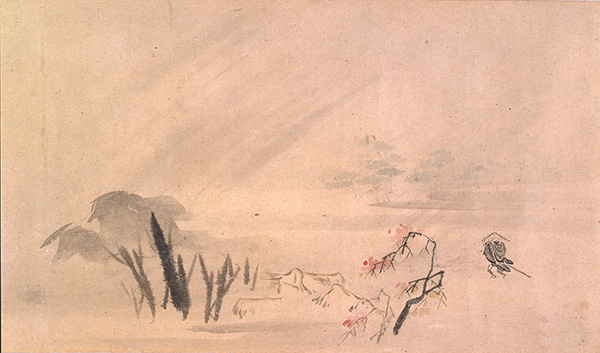
by Matsuo Basho
Early Edo period
Kakimori Bunko

One-line Poem ‘Nyopporito’
by Ueshima Onitsura
Early Edo period
Kakimori Bunko
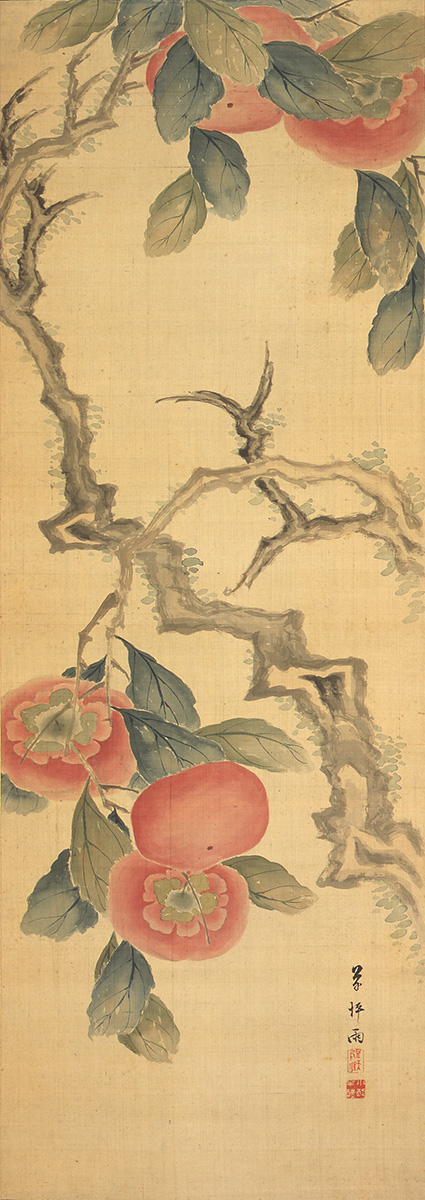
by Takahashi Sohei
Late Edo period
Kakimori Bunko
Winter Exhibition 2021
“Ancient Chinese and Oriental Art” Returns
with Hosokawa Mirror on display for a limited period
- Period
- Saturday, December 18, 2021-Sunday, February 13, 2022
- Closed
- Mondays except January 10, 2022
Closed on January 11, 2022
December 27, 2021-January 7, 2022 (Year-end/New Year holidays) - Opening hours
- 10:00am to 4:30pm (last entry 4:00pm)
The exhibition“Ancient Chinese and Oriental Art” successfully started in February 2020, however, it was suspended due to the COVID pandemic. We are delighted to present the encore exhibition after a year and ten months since the cancellation.
Hosokawa Moritatsu (16th Head, 1883-1970), the founder of Eisei Bunko, became acquainted with Chinese classical literature in his childhood and had strong passion for Chinese culture. During his eighteen months’ travel around Europe (1926-1927), Moritatsu purchased ceramics and metalwork such as “Bronze Dish with bird, animal, and cloud design in gold”, which later was designated as a National Treasure. He was actively involved in collecting Chinese art after he returned and expanded his interest into Oriental art such as Islamic ceramic wares and tiles.
In this exhibition, thirteen artworks of ancient Chinese art including “Large Jar with gold, silver and glass inlay” (Important Cultural Property) are added to the objects displayed in the 2020 exhibition such as “Bronze Mirror with the design of hunting scene”, known as “Hosokawa Mirror”. Exquisite and unique works of Oriental art such as “Glass Gold-band Bowl” are also displayed in the gallery again.
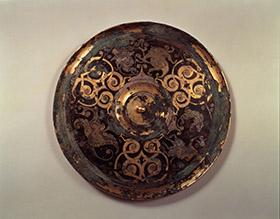
Bronze Mirror with design of hunting scene in gold and silver inlay
China, Warring States Era, 4th-3rd century B.C.
Eisei Bunko Museum
On display from Saturday, December 18 to Sunday, January 23, 2022
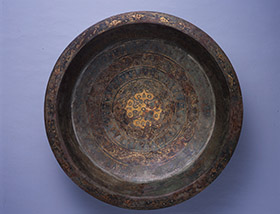
Bronze Dish with bird, animal, and cloud design in gold
China, Former Han-Xin Dynasty, 3rd century B.C.-1st century A.D.
Eisei Bunko Museum
on display from Tuesday, January 25, 2022 to Sunday, February 13
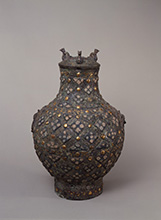
Large Jar with gold, silver and glass inlay
China, Warring States Era, 5th-3rd century B.C.
Eisei Bunko Museum